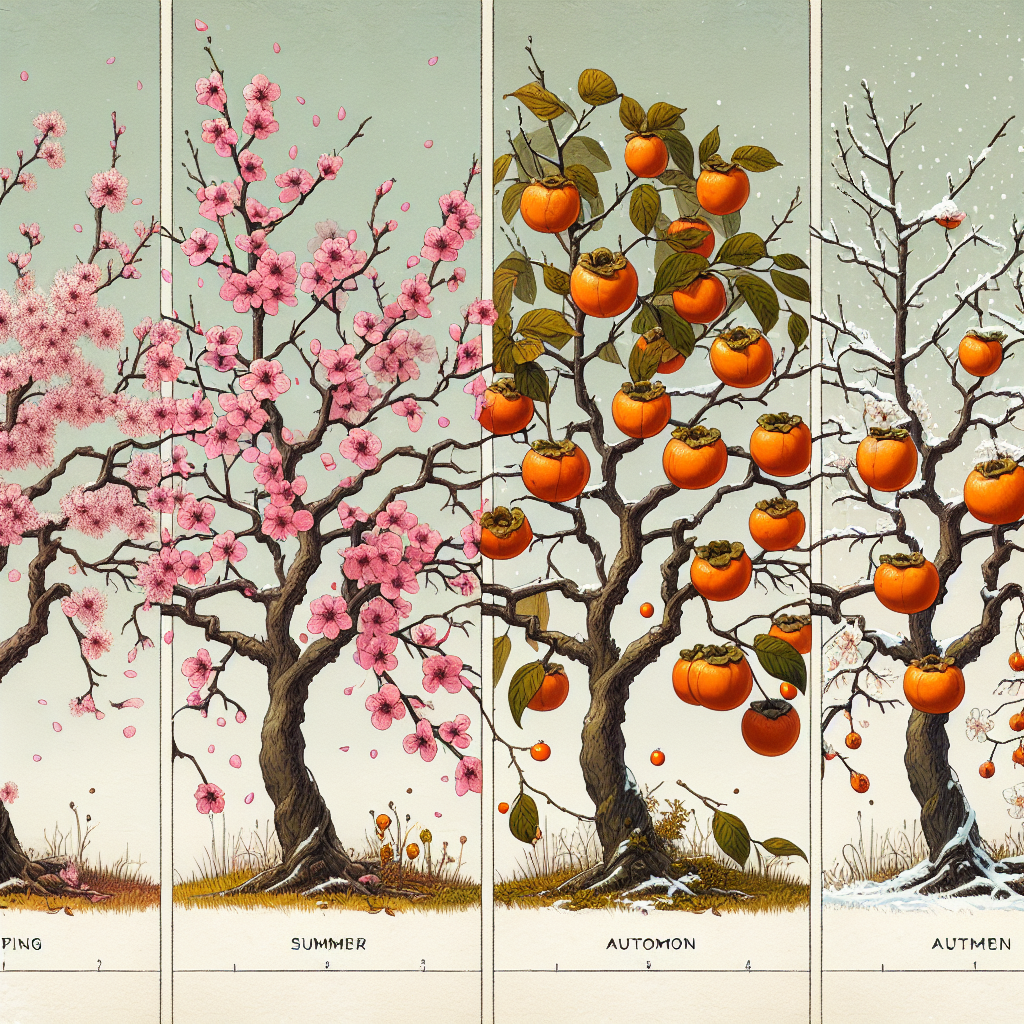Pruning Techniques for Healthy Apple Trees
Updated June 25, 2025 at 12:17 pm

Understanding the Basics of Apple Tree Pruning
Before we dive into the intricacies of pruning techniques for healthy apple trees, let’s establish the groundwork. Pruning your apple trees is not just about shaping them aesthetically; it’s a vital practice to ensure a robust structure, good fruit production, and prevention of disease. Healthy apple trees lead to an abundant and high-quality harvest, so it’s essential to learn how to maintain them properly.
Benefits of Regular Pruning
Regular pruning comes with multiple benefits. It helps maintain the size of the tree, improves sunlight penetration and air circulation, and removes dead or diseased branches. These actions promote overall tree health and vigor, leading to better fruit. Moreover, by eliminating unnecessary branches, you concentrate the tree’s energy on producing sizeable, tastier apples.
When Is the Best Time to Prune?
Timing is crucial when it comes to pruning apple trees. The dormant season, typically late winter or early spring, is ideal because the absence of leaves gives a clearer view of the tree structure. Additionally, pruning cuts heal faster during this period, reducing the risk of infection or pest infestation. However, keep in mind that late winter pruning may stimulate new growth, which may be damaged by any unexpected frosts.
Understanding Tree Anatomy for Effective Pruning
Pruning like a pro requires a basal knowledge of tree anatomy. Essential parts include the trunk, scaffolding branches, water sprouts, and suckers. Scaffolding branches form the support structure of the tree; these should be robust and well-spaced. Water sprouts, which shoot straight upwards, and suckers, which grow from the base, generally take away energy from fruit production and should be removed.
Practical Pruning Techniques
There are various pruning cuts you’ll need to be familiar with, such as thinning cuts, which remove entire branches to open up the tree and improve air and light distribution. Heading back cuts reduce branch length and encourage the growth of side shoots. Remember, every cut should be made with a reason—a random snip here and there is more likely to harm than help your apple tree’s health.
Tools Needed for Pruning
Choosing the right tools makes all the difference. A high-quality pruning saw is indispensable for cutting thick branches, while hand pruners are perfect for smaller branches and detailed work. Additionally, pole pruners can be beneficial when it comes to hard-to-reach branches. Always ensure your tools are sharp and clean to make smooth cuts and reduce the risk of disease.
Fiskars Pruning Stik
One product that’s particularly helpful for apple tree pruning is the Fiskars Pruning Stik. Aimed at reducing the physical strain of pruning, this extendable pole pruner is favored for its convenience and ease of use. The precision-ground blade is hardy and makes clean cuts, while the pole extends up to 12 feet, enabling access to those out-of-reach branches.
Pros:
- Lightweight and easy to maneuver
- Extendable reach for high branches
- Non-stick blade for smooth cutting
Cons:
- May be less effective on very thick branches
- Price point might be higher compared to basic pruners
Find This and More on Amazon
Step-by-Step Guide to Pruning Apple Trees
Feeling overwhelmed? Dont worry. Let’s break it down into a step-by-step process. First, start by removing all diseased, damaged, and dead wood. Next, focus on thinning out crowded areas to allow light to penetrate and air to circulate. Lastly, shape the tree by cutting back the main leaders. It’s said that following this method could enhance your tree’s health and fruitfulness significantly.
Pruning Young Apple Trees Versus Mature Trees
Young apple trees need formative pruning to establish a strong framework of branches, while mature trees require maintenance pruning. Formative pruning sets the stage for a tree’s future growth and productivity, emphasizing the creation of strong, well-angled branches. With mature trees, the goal is to sustain tree vigor and fruit quality by removing excess growth and any wood that is unproductive or problematic.
Common Pruning Mistakes to Avoid
Pruning is as much about what not to do as it is about following best practices. Avoid topping the tree or cutting too close to the trunk, which can lead to decay. Also, refrain from over-pruning, as it can stimulate excessive vegetative growth at the expense of fruiting. If you’re unsure, it’s better to under-prune and adjust next season.
Dealing with Wounds and Protecting Against Diseases
Pruning creates wounds on your apple trees, which can be an invitation for diseases and pests. To protect your trees, make clean cuts and allow them to heal naturally. Most experts agree that sealing wounds with pruning paint is unnecessary and potentially harmful, as it can trap moisture and decay.
The Role of Training in Conjunction with Pruning
Training young apple trees through techniques like tying down branches can complement pruning. By gently bending the branches downwards and securing them, you can influence the tree’s shape, improve sunlight exposure, and foster better fruit distribution. It’s a low-tech method, but one that could yield high returns in the long run.
Monitoring and Adjusting Pruning Techniques Over Time
Successfully pruning an apple tree isn’t a one-time effort; it requires ongoing observation and adjustment. Each tree is unique, and as conditions change, so too might the optimal pruning strategy. Keeping a watchful eye on your tree’s growth, health, and productivity is key to making smart pruning decisions year after year.
Enlisting Professional Help When Needed
If you’re ever in doubt or dealing with particularly large or complex trees, don’t hesitate to call in a professional arborist. They can provide invaluable advice and services, ensuring your trees remain healthy and productive for years to come. Remember, the initial investment in professional help could save you from costly mistakes down the line.
Staying Safe While Pruning
Pruning also comes with its share of hazards. Wear proper safety gear, including gloves, goggles, and sturdy footwear, to protect yourself. When using ladders or pole pruners, always be mindful of your surroundings and ensure you’re working in a stable and safe manner. Safety should always be your first priority.
Recapping the Essentials of Pruning for Lush Apple Trees
Pruning healthy apple trees is all about timing, techniques, and regular maintenance. By understanding tree anatomy, using the correct tools, and avoiding common mistakes, you can encourage your trees to produce delicious apples for many seasons. Remember to stay safe, be patient, and enjoy the rewarding process of nurturing your orchard.
Identifying Which Branches to Prune
Pruning begins with inspection. Look for the 3 D’s: dead, diseased, or damaged branches. These should be your first priority. In addition to these, also remove any branches that cross or rub against one another as they can create wounds and entry points for disease. You might also want to eliminate branches that grow downward, as they’re unlikely to bear quality fruit.
Safeguarding Your Apple Trees’ Health with Pruning
A well-pruned apple tree not only looks good but is also less prone to diseases. Pruning opens up the canopy, allowing light and air to reach the inner branches, which reduces the risk of fungal diseases like apple scab and powdery mildew. By removing crowded or overlapping branches, you can also limit the spread of pests that thrive in dark, humid environments.
Renovating Neglected Apple Trees Through Pruning
If you’ve inherited an overgrown apple tree, fear not, renovation pruning can bring it back to life. This process might take a few years, as it’s important not to remove more than a third of the tree’s canopy at a time. Start by removing the most problematic branches and gradually working towards a more productive and manageable tree each season.
Cultivating Different Apple Tree Forms
Apple trees can be pruned into various forms depending on your space and preference. Common styles include the central leader, which is great for large, traditional orchards, and the modified central leader, suitable for smaller spaces. For really compact areas, consider espalier, a method where trees are trained flat against walls or fences.
The Art of Espalier
If your space is limited, the art of espalier can be a beautiful and productive way to grow apple trees. Training trees to grow flat against a support structure not only saves space but can also turn into an attractive garden feature. Starting an espalier requires careful and consistent pruning and training over several years, focusing on developing a strong horizontal tier structure.
Supporting Tools for Pruning Apple Trees
Besides the Fiskars Pruning Stik, there are other supportive tools that can assist you in the pruning process. Loppers, ideal for branches up to two inches thick, provide leverage to make clean cuts. You might also consider a sturdy tripod ladder designed specifically for orchard work, which provides stability on uneven ground.
Bahco Pneumatic Pruning Tool
For more extensive orchards, a Bahco Pneumatic Pruning Tool can offer efficiency and reduce labor. Operated by air compressors, these tools can easily cut through thick branches without the muscle work. People often praise them for their durability and ease of use, even under continuous operation.
Pros:
- Efficient for larger scale pruning jobs
- Great for thick branches
- Durable construction for lasting performance
Cons:
- Requires an air compressor, adding to the initial investment
- Not as portable as manual tools
Find This and More on Amazon
Fertilizing After Pruning
Pruning can stimulate new growth, so it’s wise to support your apple trees with nutrients afterward. A balanced fertilizer applied in the early spring can provide essential nutrients as the tree recovers and prepares for the growing season ahead.
Watering Needs Post-Pruning
After you’ve pruned your apple trees, they’ll need some TLC. Ensure they receive adequate water, particularly if you are expecting a dry season. The goal is to maintain consistent moisture, but be careful not to overwater, as excess moisture can promote root rot and other issues.
Mulching for Healthy Soil and Roots
Alongside proper watering, mulching plays a crucial role in maintaining a healthy root zone. A layer of organic mulch can help retain soil moisture, suppress weeds, and provide nutrients as it breaks down. Be sure to keep the mulch away from the trunk to prevent rot and diseases.
Companion Planting with Apple Trees
Companion planting can create a beneficial ecosystem around your apple trees. Planting flowers like marigolds can help repel pests, while herbs such as lavender and chives can attract pollinators and beneficial insects. Just be sure the companions don’t compete too aggressively with the apple trees for resources.
Organic Pest Control Measures
When it comes to pests, there are organic measures you can take to protect your pruned apple trees. Horticultural oils are effective for controlling overwintering insect eggs, and encouraging natural predators like ladybugs can help with aphid populations. Always prefer organic solutions to maintain a healthy environment and prevent chemical buildup in your soil.
Observing the Results of Your Pruning Efforts
The fruits of your labor will not go unnoticed. As your pruning skills improve, you’ll see positive changes in your apple trees’ health and productivity. Depending on the variety, you might start to see results in the form of more abundant and better-size fruit as early as the next harvest season.
Yearly Pruning Calendar for Apple Trees
Create a yearly pruning calendar as a reminder of the best practices throughout the seasons. Note the proper times for heavy structural pruning during dormancy and the lighter maintenance pruning that can be done in summer to control excessive vegetative growth.
Engaging with the Community for Pruning Wisdom
Joining local gardening clubs or online forums can be a treasure trove of pruning wisdom. Engaging with fellow apple tree growers allows you to share experiences, learn new techniques, and stay updated on the latest in apple tree care. It’s also a great way to connect with people who share your interest in sustainable orcharding.
Documenting Your Pruning Journey
Consider keeping a pruning journal or a photo album of your apple trees throughout the years. Documenting your progress not only gives you a sense of accomplishment but also acts as a valuable reference for what works and what doesn’t, which can be incredibly useful for future pruning decisions.
Apple Tree Pruning Resources and Continued Education
Never stop learning. There are many resources available for apple tree pruning, from extension services to books and online courses. Investing in your education on the topic will pay off with lusher trees, better fruit, and more satisfaction from your gardening endeavors.
Understanding Growth Patterns for Targeted Pruning
As you become more familiar with your apple trees, you’ll start to notice unique growth patterns. Focus your pruning efforts on encouraging strong, outward-facing buds. These will become the fruiting branches that are easier to access and maintain. Recognizing how your apple trees grow allows for more intuitive pruning over time.
With each variety of apple tree having its growth habits, targeted pruning promotes a balanced canopy and can contribute to an even ripening of fruit. This personalized attention to your trees’ growth patterns will result in a healthier, more productive orchard.
Utilizing Pruning to Manage Pests and Diseases
Pruning not only shapes your apple trees but also aids in managing pests and diseases. By removing diseased branches and opening the tree’s structure for better airflow, you create an environment less hospitable to issues like codling moths or apple maggot flies.
Integrating pruning with an overall pest management plan is key. For example, timing pruning activities to disrupt the life cycle of certain pests can have a substantial impact on keeping your orchard healthy. Consult with local specialists on the best times to prune to combat common regional pests.
Understanding the Impact of Pruning on Apple Tree Lifespan
A systematic and careful pruning regimen not only maximizes the productive life of apple trees but can also extend it. By preventing overcrowding and stress on the tree’s structure, you ensure that the tree doesn’t have to work as hard to produce a good crop, which can prolong its lifespan.
Every cut should support the tree’s long-term health and productivity. Over-pruning might give a quick aesthetic fix but can lead to a stressed tree with a shorter life. It’s the same with under-pruning; not pruning enough can lead to poor air circulation and light penetration, which affects the tree’s longevity.
Advanced Pruning Techniques for Specialist Growers
If you find satisfaction in pruning and have a decent amount of experience, there are advanced techniques to explore, such as summer pruning for size control and spur management to increase fruiting sites. These methods are more nuanced and require an understanding of how the apple tree responds to various types of pruning.
Advanced techniques often involve subtle adjustments throughout the growing season to promote optimal fruit development. These practices may be more time-intensive but can lead to premium-quality fruit that stands out in terms of flavor, size, and appearance.
Making Pruning a Community Activity
Pruning doesn’t have to be a solitary task. Host a pruning workshop or a pruning party with friends and neighbors to turn it into a social learning experience. Such gatherings can be especially helpful when you have a large number of trees to prune or are looking to teach others about apple tree care.
Through community activities, pruning knowledge is shared and preserved. Experienced pruners can mentor beginners, and everyone benefits from the group’s collective experience. Plus, the process feels more enjoyable and less like a chore.
Reflections on the Aesthetic Pleasure of Pruning
The sight of a well-pruned apple tree is not only pleasing to the eye but also reflects the care put into its maintenance. Over time, the form and structure achieved through strategic pruning can be quite stunning and add to the aesthetic value of your property.
It is also gratifying to watch a tree evolve season after season, knowing that your efforts directly influence its shape and fruitfulness. As you gain more experience, you’ll be able to take pride not only in the harvest but also in the beauty your pruning efforts have created.
Final Thoughts on Pruning for Optimal Orchard Success
To sum it up, pruning is a crucial, ongoing process that can deeply affect the health and output of your apple trees. With the right techniques, tools, and timing, you enhance the tree’s structure, encourage better fruit production, and potentially extend the life of your trees.
Approach pruning with patience, knowledge, and a touch of artistry. Remember to always prioritize the tree’s health and wellbeing, and never underestimate the power of learning from others and sharing your experiences. Happy pruning!
Shop more on Amazon


